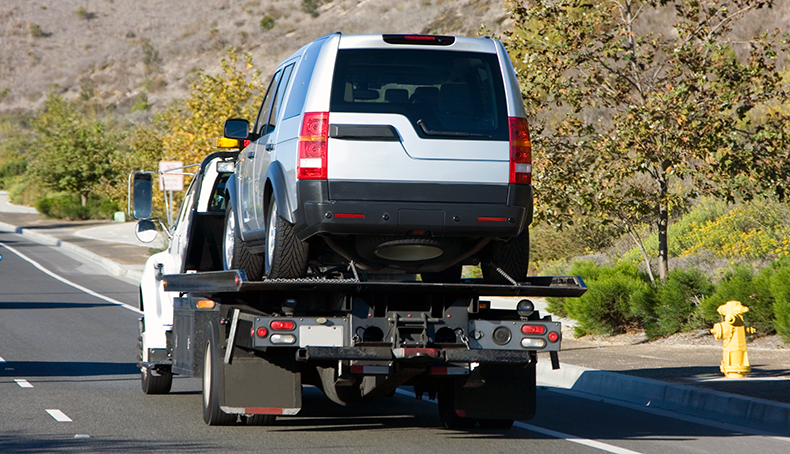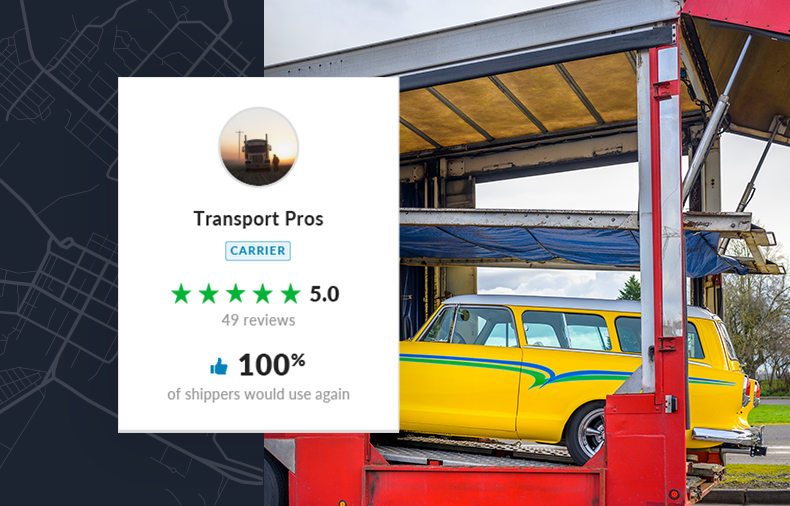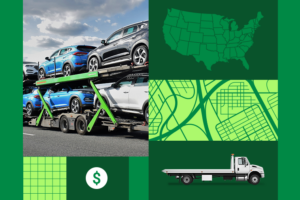When it comes to shipping a classic or luxury car across the country, ensuring the safe transportation of these valuable and cherished vehicles is paramount. Finding a professional car shipping service is crucial in safeguarding your investment and providing peace of mind during the journey. In this blog, we’ll explore factors to consider before shipping, the importance of planning and documentation, and choosing the right shipping method.
Factors to Consider Before Shipping a Classic or Luxury Car
Planning ahead and preparing a vehicle for transport are essential first steps when shipping a classic or luxury car. These measures help ensure a smooth, hassle-free process while safeguarding the vehicle and complying with legal requirements. Here are some factors to consider when planning for your car shipment:
- Documentation: Proper documentation is crucial before shipping a car. This can include the vehicle’s title, registration, and insurance documents. It’s essential to check the specific requirements of the destination state or country to ensure you have all the necessary paperwork.
- Insurance: Adequate insurance coverage is vital to protect your vehicle during transit. Confirm with your insurance provider whether your existing policy covers transportation or if additional coverage is needed. It’s also advisable to obtain written confirmation of insurance coverage from the shipping company. Want extra peace of mind? Learn about the uShip Protection Plan.
- Legal Considerations: Familiarize yourself with the laws and regulations regarding vehicle transportation in the origin and destination locations. Some states or countries may have specific requirements for your vehicle, such as emissions standards or import/export restrictions. Ensure you comply with all applicable laws to avoid any legal complications.
- Vehicle Condition: Before shipping, thoroughly inspect your vehicle and document any existing damage. Take clear photographs from different angles to have evidence in case of any disputes. Lastly, remove any personal belongings and ensure the car is clean and in good working condition.
- Choosing the Shipping Method: Choosing between enclosed and open transport is a crucial decision. Enclosed transport provides maximum protection from external elements and is ideal for high-value or classic cars. Open transport, on the other hand, is more cost-effective and commonly used for standard vehicles. Consider the value and condition of your car (and your budget) before making a choice.
- Finding a Transporter: Take the time to research and select a reliable and reputable transporter. Read reviews, check their credentials, and verify their insurance coverage. Request quotes from multiple carriers and compare their services and pricing to make an informed choice.
- Scheduling and Timing: Plan your shipping schedule well in advance, especially if you have specific timelines to meet. Transporters may have limited availability, particularly during peak seasons or holidays. Planning well in advance increases the chances of securing your desired shipping dates and avoiding unnecessary delays.
- Preparing the Car: There are several steps to prepare your car for transportation. These include removing loose parts or accessories, retracting or securing the antenna, turning off the car alarm, and ensuring the fuel tank is no more than a quarter full. It’s best to consult your carrier for their specific guidelines on car preparation.
In summary, planning ahead and preparing your car for transport are crucial first steps that can help ensure a successful shipping experience. They involve gathering the necessary documentation, securing insurance coverage or additional protection, complying with legal requirements, and choosing the appropriate method for shipping a classic or luxury car. By considering these factors, you can ensure a smooth and stress-free car shipping process from pickup to delivery.

Choosing a Reliable Service Provider
Seek a car shipping company or transporter with a proven track record and positive customer reviews for cross-country car shipping. Verify their credentials, such as licensing, insurance, and industry certifications. Look for experience in shipping a classic or luxury car, as these vehicles require special handling and care.
Benefits of Using an Experienced and Reputable Transporter:
- Professional car shipping carriers have the expertise and specialized equipment to handle classic and luxury cars.
- They are familiar with the necessary precautions to ensure safe transportation, minimizing the risk of damage or mishaps.
- Established providers offer clear communication and transparent pricing.
Preparing a Classic or Luxury Car for Transport
Shipping a classic or luxury car requires careful preparation to ensure safety and protection throughout the journey. By following these steps, you can minimize the risk of damage and make the shipping process smoother:
- Clean the Car: Before handing over your vehicle for transport, thoroughly clean it. Washing the exterior and cleaning the interior will help identify any existing scratches, dents, or other cosmetic issues. Take note of any damage and document its condition with photos or videos to reference later.
- Remove Personal Items: Remove all personal belongings from the car. This can include any loose items, accessories, or valuables. Clearing out the vehicle reduces the risk of theft and ensures that nothing interferes with the transportation process.
- Document the Condition: Along with taking photos or videos of any pre-existing damage, it’s essential to document the vehicle’s overall condition. Note the mileage, check the tire pressure, and inspect the engine. Keeping a record of the car’s condition helps in case any issues arise during transportation.
- Ensure Proper Paperwork: Ensure all necessary paperwork is in order before pick-up. This includes having the vehicle’s registration, insurance documents, and other relevant paperwork readily available. Double-check that the information is accurate and up to date.
- Consider Additional Insurance: While reputable car shipping companies provide insurance coverage, it may be worth considering added protection for extra peace of mind. Speak with your insurance provider to determine if additional policies or coverage options are available, or consider purchasing a uShip Protection Plan.
- Disable Alarms or Tracking Devices: If your classic or luxury car has any security systems, alarms, or tracking devices, be sure to disable them before transport. Inform the transporter about any disabled security features to avoid misunderstandings during shipping.
Following these steps ensures your cross-country classic or luxury car transport is well-prepared. Taking the time to clean, document, and secure your vehicle will help protect it throughout the journey and give you peace of mind knowing it is in safe hands.
Open vs Enclosed Car Shipping
When it comes to cross country car shipping, there are two primary methods: enclosed car carriers and open car carriers. Each option offers distinct advantages and disadvantages, particularly regarding safety and cost. Let’s explore the differences between open vs. enclosed car shipping and which is most suitable for classic and luxury cars.
Fun fact: As of 2023, the global market for enclosed car transportation stands at $724.2 million, with projections estimating a 7% annual growth rate until 2032 according to Preowned Auto Logistics.
Enclosed Car Carriers
Enclosed car carriers are fully enclosed trailers or containers designed to protect vehicles from external elements during transport. Enclosed carrier car shipping costs average between $1,800 and $2,600, offering enhanced protection for high-value vehicles, according to Forbes.
Pros:
- Enhanced Protection: Enclosed carriers shield vehicles from road debris, weather conditions, and potential damage caused by exposure to the elements.
- Added Security: The enclosed nature of these trailers provides an extra layer of protection, reducing the risk of theft or vandalism.
- Specialized Handling: Enclosed trailers have features like soft tie-downs, air ride suspension, and climate control, making them well-suited for classic and luxury vehicles.
Cons:
- Higher Cost: The added protection and specialized features make enclosed transport services more expensive than open transport.
- Limited Availability: Enclosed carriers may be less common and have limited availability compared to open trailer carriers, especially in certain regions or during peak seasons.
Open Car Carriers
Open car carriers typically have large trailers with multiple levels and no roof or sides, allowing for the transport of several vehicles at once.
Pros:
- Cost-Effective: Open transport is generally more affordable than enclosed transport, making it a popular choice for many vehicle owners.
- Wide Availability: Open carriers are widely available, making it easier to find a carrier and schedule transportation.
- Efficient for Common Vehicles: Open carriers are well-suited for standard cars and can accommodate more vehicles, making them a preferred choice for dealerships and manufacturers.
Cons:
- Exposure to Elements: As open carriers lack protection from external elements, vehicles may be exposed to weather conditions, road debris, and potential damage caused by these factors.
- Limited Security: While measures are taken to secure vehicles on open trailers, they are more vulnerable to theft or unauthorized access than enclosed trailers.
- Potential for Cosmetic Damage: Classic and luxury cars may be more susceptible to cosmetic damage from road debris or environmental factors when transported on open carriers. For this reason, enclosed transport is the preferred method for cross country car shipping.

Which is Best For Classic and Luxury Cars?
Enclosed car transport service is generally considered the preferred method for shipping a classic or luxury car due to the specialized handling, enhanced protection, and added security features. These vehicles require extra care and attention to maintain their condition and value. Carriers with enclosed trailers typically offer climate-controlled environments, reduced exposure to potential hazards, and greater peace of mind for owners.
On the other hand, open car transport is more suitable for standard vehicles, where cost efficiency and availability are the primary considerations. While carriers with open trailers can transport classic and luxury cars, there is a higher risk of exposure to elements and potential cosmetic damage. However, open transport may still be a viable and more budget-friendly option for classic cars undergoing restoration or vehicles with a lower value.
Ultimately, the choice between open vs. enclosed car shipping depends on the owner’s priorities, budget, and expected level of protection and care for their classic or luxury vehicle.
Ensuring Safe Transportation
Vehicle shipping services offered by professional carriers prioritize the safety of vehicles during transportation and implement various measures to minimize the risk of damage, theft, and delays. Here are some key steps experienced transporters will take:
- Secure Loading and Unloading: Carriers use specialized equipment to load and unload vehicles onto trailers safely and securely. This may include using soft tie-downs and wheel chocks to prevent movement and damage during transit.
- Insurance Coverage: Reputable car shipping transporters offer insurance coverage to protect vehicles in case of any unforeseen incidents or accidents during transport. It is crucial to inquire about the extent of coverage and understand the terms and conditions of the insurance policy.
- Vehicle Condition Documentation: Before transportation, car shipping companies often thoroughly inspect the vehicle’s condition. They document any pre-existing damage, such as scratches or dents, with photographs, videos, or written reports. This documentation helps ensure accountability and aids in resolving any disputes that may occur.
- Tracking and Monitoring: Many professional carriers will provide tracking updates, allowing customers to stay updated on the location and progress of their vehicle shipment. This can be done through the uShip Mobile app or direct communication with the carrier.
Addressing Concerns
Potential Damage: While car shipping carriers take precautions to prevent damage during long-distance car shipping, choosing a reputable provider with a proven track record is crucial. Reading customer reviews and testimonials can help gauge their reliability. Additionally, thoroughly inspecting the vehicle before and after transportation and promptly reporting any issues can facilitate a smoother resolution process.
Theft Prevention: Professional car shipping service providers prioritize security measures to prevent theft. They may use secured storage facilities, employ strict access control, and implement tracking systems to monitor the location of vehicles throughout the journey. Inquiring about the transporter’s security protocols and measures to protect vehicles during transportation is advisable.
Delays: While transporters strive to adhere to schedules for long-distance car shipping, delays can sometimes occur due to unforeseen circumstances such as traffic, weather conditions, or logistical challenges. Maintaining open communication with the service provider is the best way to stay informed about potential delays.
Insurance Coverage and Claims
Verifying your insurance coverage or your transporter’s coverage is crucial for several reasons:
- Financial Protection: Verifying insurance coverage ensures financial protection in case of any damage or loss during transportation. It allows you to claim compensation from the insurance provider, mitigating potential financial losses.
- Risk Assessment: Verifying insurance coverage helps assess the risk associated with the transportation process. It allows you to understand the extent of coverage, including the types of damages or losses covered, deductible amounts, and any limitations or exclusions. This knowledge helps you make informed decisions regarding risk management and additional protection requirements.
- Compliance: Many transportation agreements, contracts, or regulatory bodies may mandate specific insurance coverage levels for different types of shipments. By verifying coverage, you can confirm compliance and avoid potential legal issues.
Are you looking for additional protection and peace of mind? Learn more about the uShip Protection Plan.
In case of any damage or loss during transit, the following steps should be taken:
- Immediate Notification: Notify the carrier or transportation company when you discover any damage or loss. Ideally, this happens immediately after delivery upon inspection.
- Documentation: Document the damage or loss thoroughly. Take photographs or videos of the damaged goods or packaging, noting any visible signs of impact or mishandling. This documentation serves as evidence to support your case.
- Written Communication: Follow up your notification with a written communication to the carrier or transportation company. Describe the damage or loss in detail, including the date, time, and location of occurrence. Provide copies of any supporting documentation, such as photographs or videos.
- Insurance Claim Submission: If the transportation company is responsible for the damage or loss, initiate the claim process by contacting your insurance provider and providing the necessary information. This includes incident details, supporting documentation, and other relevant information they may require. Follow their instructions for filing the claim and provide any additional information promptly.
For those who purchased a uShip Protection Plan, simply log into your uShip account, click Submit a Case, and follow the steps displayed. We will take care of the rest!
- Record Keeping: Maintain copies of all communication, documentation, and correspondence related to the claim or uShip Protection Plan case. This includes emails, letters, claim forms, receipts, and other relevant records. Proper record-keeping ensures you have a complete trail of the claim or case process and aids in resolving any disputes that may arise.
When documenting the vehicle’s condition, consider the following advice:
- Note Existing Damage: Make a detailed record of any pre-existing damage, such as scratches, dents, or other cosmetic issues, before pickup. Take photographs or videos to document these damages.
- Thorough Inspection: Upon delivery, conduct a thorough inspection of the vehicle. Examine the exterior and interior for any damage or discrepancies, paying attention to any dents, scratches, or other visible signs of damage.
- Documentation: Prepare a written report detailing the vehicle’s condition, including any pre-existing damage or discrepancies. Include the date, time, and location of the delivery and the names of individuals involved in the process.
- Carrier Acknowledgment: Request the carrier or transportation company to acknowledge and sign the document affirming the accuracy of the recorded information. This ensures that both parties know the vehicle’s condition upon delivery.
- Retain Documentation: Keep a copy of the inspection report and any supporting documentation for your records. This documentation is evidence if any disputes arise regarding the vehicle’s condition.
By following these steps, you can establish a clear record of the vehicle’s condition upon delivery, which can be valuable in case of any future claims for damages that may have occurred during transit.
Cost Factors and Getting Quotes
The cost of shipping a classic or luxury car can fluctuate depending on several key factors. The most common include:
- Distance: The distance between pickup and delivery locations significantly impacts the shipping cost, with longer distances generally resulting in higher prices.
- Shipping Method: The shipping method you choose can significantly impact the cost. Open transport is less expensive but exposes the vehicle to the elements. In contrast, enclosed transport provides greater protection but is more costly.
- Vehicle Size and Weight: The car’s size and weight can also affect the cost. Larger and heavier vehicles may require specialized equipment or carriers, which can increase the shipping price.
- Season and Timing: The time of year and current market demand can influence shipping costs. The prices may be higher if you plan to ship during peak seasons or holidays when many people are relocating.
- Vehicle condition: A vehicle’s condition can affect the average cost of cross-country car shipping. Inoperable vehicles, such as non-running classic cars, may require additional equipment or specialized handling, resulting in higher shipping fees.
- Additional services: If you require other services like door-to-door pickup and delivery, expedited shipping, or insurance coverage, these services may add to the overall cost.
Additional Vehicle Shipping Services and Special Considerations
Additional services offered by car shipping companies may vary, but here are some common ones:
- Door-to-Door Service: Car shipping companies can pick up your vehicle from your location and deliver it directly to your desired destination, providing convenience and saving you the hassle of transporting it to a terminal.
- Expedited Shipping: If your vehicle needs to be delivered within a shorter timeframe, some car shipping companies offer expedited or express shipping options for an additional cost.
- Tracking and Updates: Many carriers provide tracking updates within the uShip app, allowing you to monitor the progress of your vehicle during transit.
- Storage Options: If you require temporary storage for your vehicle, some service providers offer secure storage facilities where you can keep your car until you are ready to have it delivered.
- Customized Shipping Solutions: Carriers that provide vehicle shipping services understand that every vehicle is unique and may offer customized shipping solutions tailored to your needs. This can include special handling instructions, additional protection measures, or accommodating oversized or modified vehicles.
Special considerations for vintage, high-value, or customized vehicles:
- Enclosed Transport: For vintage, high-value, or customized vehicles, enclosed transport is highly recommended. It provides protection from the elements, road debris, and potential damage during transit. Enclosed trailers are typically equipped with climate control and additional security.
- Experienced and Specialized Carriers: Look for car shipping companies with experience handling vintage, high-value, or customized vehicles. These carriers understand the specific needs and intricacies associated with transporting such cars.
- Insurance Coverage: Ensure that your vehicle has adequate insurance coverage during transportation. For valuable or customized vehicles, obtaining additional protection or verifying that the transporter’s policy sufficiently covers the vehicle’s value may be necessary.
- Detailed Condition Report: Before shipping your vintage, high-value, or customized vehicle, document its current condition thoroughly. Take detailed photographs and note any existing damage or unique features. This documentation will serve as a reference in case of any disputes regarding the vehicle’s condition upon delivery.
International Car Shipping Considerations
Customs and Regulations: When shipping a vehicle internationally, it’s essential to research and comply with the destination country’s customs and regulations. Each country has specific requirements, such as documentation, duties, and taxes.
Shipping Methods: International car shipping typically involves two main approaches: roll-on/roll-off (RO-RO) and container shipping. RO-RO involves driving the vehicle onto a specialized vessel. In contrast, container shipping involves securing the car in a shipping container. The chosen method may depend on the destination, budget, and security concerns.
Documentation and Paperwork: International car shipping requires extensive documentation, including the vehicle’s title, bill of sale, export/import permits, and customs declarations. It’s crucial to ensure you have all the necessary paperwork to avoid delays or issues at customs.
Choose a Reputable Transporter: When shipping a vehicle internationally, selecting a reputable shipping company with experience in international transportation is especially important. They should know the customs regulations and necessary paperwork and be able to provide reliable and secure transportation for your vehicle.
When shipping vintage, high-value, or customized vehicles internationally, working with experienced professionals who understand the unique requirements and can provide the necessary care to ensure a safe and secure transport process is crucial.
FAQs
How much does it cost to ship a classic car across the country?
The average cost of shipping a car cross country can vary depending on several factors, including the distance, the specific route, the size and weight of the vehicle, the type of transport (enclosed or open carrier), and any additional vehicle shipping services you may require. Visit our Cost to Ship a Classic Car page to see the most recent shipments.
Is it safe to ship a luxury car in an open carrier?
While open carriers are generally safe for transporting most vehicles, consider using an enclosed carrier if you have a luxury car or a vehicle of high value. Enclosed trailers provide additional protection from the elements and potential road debris, ensuring higher security during transportation.
What is the average transit time for shipping a classic car?
The average transit time for classic car shipping can vary depending on the distance and specific route. On average, most national car shipments take < 5 days. However, this does not include the time for pickup, which can vary depending on a carrier’s location and availability. Plan ahead and communicate with your transporter to manage potential delays and delivery roadblocks.
Are there any specific requirements for shipping vintage cars?
When shipping vintage cars, taking certain precautions is essential to ensure their safe transportation. These can include:
- Cleaning the car thoroughly and documenting its condition
- Taking photographs of the vehicle from various angles for reference
- Removing any personal belongings and valuables from the car
- Securing any loose parts or accessories
- Disabling car alarms to prevent unnecessary disruptions during transit
- Ensuring the vehicle has proper insurance coverage or protection
How do I prepare my luxury car for transportation?
To prepare your luxury car for transportation, follow these steps:
- Wash the vehicle thoroughly to remove dirt and debris
- Document the car’s pre-shipping condition with photos or a visual inspection
- Remove any personal belongings from the car
- Turn off the car alarm system
- Ensure the fuel tank is around a quarter full
- Check for any fluid leaks and get them fixed
- Secure or remove any loose parts or accessories
- Inform the shipping company of specific handling instructions or requirements for your car
What is the difference between enclosed and open car transport?
The main difference between enclosed and open car transport is the protection they provide during transportation. Enclosed trailers have walls and a roof, providing complete protection from the elements and potential road debris. They are typically used for high-value, luxury, and vintage vehicles. On the other hand, open car carriers are exposed and have no walls or roofs, making them more susceptible to weather conditions and road debris. They are commonly used for standard vehicles and are more cost-effective.
Can I ship my classic car internationally?
Yes, it is possible to ship a classic car internationally. However, the process can be more complex and expensive than domestic shipping. International car shipping involves additional considerations such as customs regulations, import/export documentation, and potentially different transportation methods (e.g., container shipping). It’s important to work with a reliable international car shipping company with experience handling such shipments.
Do car shipping service providers have insurance coverage?
Most reputable car shipping carriers provide insurance coverage for the vehicles they transport. However, the extent of coverage can vary, so it’s crucial to clarify the details beforehand. Make sure you understand the coverage limits, deductibles, and any exclusions that may apply. If necessary, consider purchasing additional protection to ensure total peace of mind.
How can I track the progress of my car during transportation?
Most car shipping service providers offer status updates that allow you to monitor the progress of your car shipments. You can also contact them directly for updates and any additional information you may need.
What should I do if my car gets damaged during transit?
For those who purchased a uShip Protection Plan, simply log into your uShip account, click Submit a Case, and follow the steps displayed. We will take care of the rest!
If your car sustains damage during transit and you haven’t purchased a Protection plan, here are the steps you should take:
- Document the Damage: Take photos or videos of the damage from different angles. This will serve as evidence when filing a claim.
- Notify Your Service Provider: Contact the shipping company as soon as possible to report the damage. Provide them with detailed information about the car’s condition before and after shipping.
- Review the Coverage: Check the insurance coverage provided by the transporter. Understand the terms, coverage limits, and deductibles.
- File a Claim: If the insurance covers the damage, file a claim with the shipping company. Follow their specific instructions and provide all the necessary documentation and evidence.
- Obtain Repair Estimates: Get repair estimates from trusted mechanics or auto body shops to assess the cost of repairs. This information will be needed when submitting the claim.
- Cooperate with the Process: Work closely with the service provider and their insurance provider to provide any additional information or documentation required for the claim. Be prepared to provide the necessary evidence and cooperate with inspections or investigations.
It’s important to note that specific procedures and timelines may vary depending on the shipping company and their insurance policies. Always review the terms and conditions provided by the company and follow their instructions for filing claims and resolving disputes.
Ready to start shipping your classic or luxury car? Create your free listing today and start receiving competing quotes from experienced car shipping companies and transporters.
TL;DR: Key Takeaways for Shipping a Classic or Luxury Car
- Choose Enclosed Transport: Enclosed carriers provide added protection from weather and road debris, ideal for high-value or delicate vehicles.
- Verify Insurance Coverage: Ensure your transporter offers sufficient insurance or consider purchasing additional coverage.
- Document Vehicle Condition: Clean the vehicle and take detailed photos before pickup to document its pre-shipment condition.
- Vet Your Transporter: Work with carriers who specialize in classic or luxury vehicles and have strong reviews and credentials.
- Understand the Costs: Premium service, distance, and vehicle value influence pricing—expect to pay more for enclosed transport.
- Book in Advance: High-demand seasons and specialized services can affect timing, so schedule your transport early.
- Know the Paperwork: Make sure you have title, registration, and any required documents ready prior to shipment.




